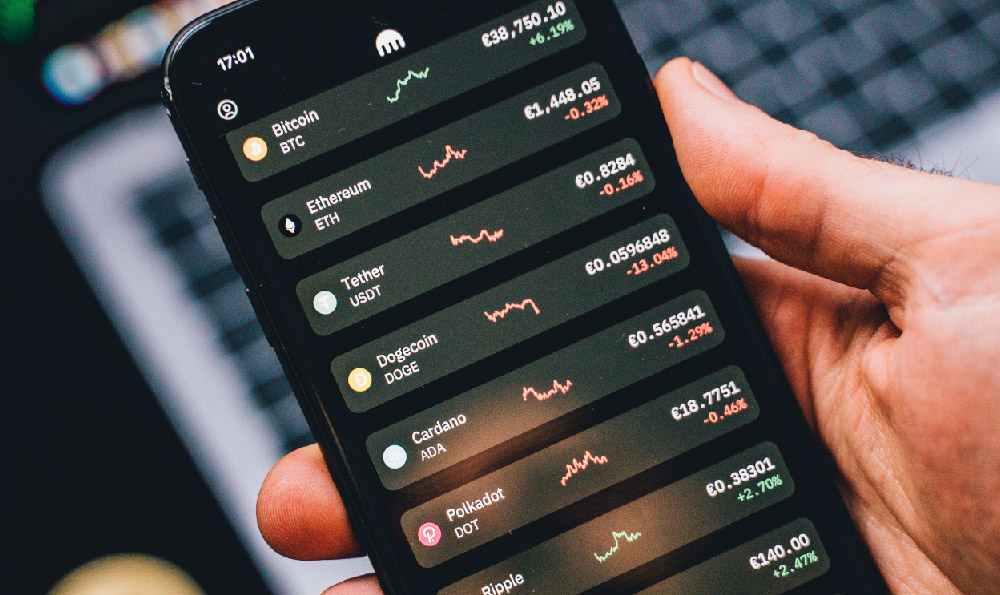Where to make money? And How?

The pursuit of financial prosperity is a universal aspiration, and understanding where and how to generate wealth is a cornerstone of achieving long-term financial security. Navigating the intricate landscape of investment opportunities requires a strategic approach, a keen understanding of market dynamics, and a willingness to adapt to ever-changing economic conditions. The key lies in identifying avenues that align with your risk tolerance, financial goals, and time horizon.
One crucial aspect of wealth creation is identifying industries and sectors poised for growth. Examining macroeconomic trends and technological advancements can reveal lucrative opportunities. For example, renewable energy is a rapidly expanding sector driven by growing environmental concerns and government initiatives. Investing in companies involved in solar, wind, or hydroelectric power generation can provide substantial returns. Similarly, the healthcare sector continues to grow due to aging populations and increasing demand for medical services. Investments in pharmaceutical companies, medical device manufacturers, and healthcare providers can prove to be profitable over the long term.
Another important element is understanding the role of different asset classes. A well-diversified portfolio should ideally encompass a mix of stocks, bonds, real estate, and potentially alternative investments. Stocks, representing ownership in companies, offer the potential for high growth but also carry greater risk. Investing in a broad market index fund or exchange-traded fund (ETF) can provide diversified exposure to the stock market. Bonds, on the other hand, are debt instruments that offer more stable returns but typically lower growth potential. Bonds can provide a cushion during market downturns and generate income through interest payments. Allocating a portion of your portfolio to bonds can help to reduce overall portfolio volatility.

Real estate offers a tangible asset that can appreciate over time and generate rental income. Investing in residential or commercial properties can provide a hedge against inflation and diversify your portfolio. However, real estate investments require careful research and due diligence. Factors such as location, property condition, and market trends must be carefully considered. Additionally, real estate investments can be relatively illiquid compared to stocks or bonds.
Beyond traditional asset classes, alternative investments such as private equity, hedge funds, and commodities can provide diversification and potentially higher returns. However, these investments are often more complex and carry higher risks. Alternative investments are generally suitable for sophisticated investors with a high risk tolerance and a longer investment horizon.
After identifying potential investment avenues, the next crucial step is devising a strategic approach to generate profits. A fundamental approach involves thorough research and analysis of companies or assets before making investment decisions. This involves examining financial statements, evaluating management teams, and assessing industry trends. By understanding the underlying value of an asset, investors can make informed decisions and potentially identify undervalued opportunities.
Another approach is technical analysis, which involves studying price charts and trading patterns to predict future price movements. Technical analysts use various indicators and tools to identify potential buy and sell signals. While technical analysis can be useful for short-term trading, it is important to note that it is not a foolproof method.
Regardless of the approach you choose, a critical aspect of successful investing is risk management. It is essential to understand your risk tolerance and only invest what you can afford to lose. Diversification is a key risk management technique, as it helps to spread risk across different assets and sectors. Setting stop-loss orders can also help to limit potential losses.
Moreover, disciplined investing is crucial for long-term success. Avoid making impulsive decisions based on emotions or market hype. Stick to your investment plan and rebalance your portfolio periodically to maintain your desired asset allocation. Regular contributions, even small amounts, can compound over time and significantly boost your investment returns.
The power of compounding is a key driver of wealth creation. By reinvesting your earnings, you can earn returns on your initial investment as well as on the accumulated interest or dividends. Over time, this compounding effect can lead to exponential growth in your portfolio. It's important to start investing early to maximize the benefits of compounding.
Financial literacy is also a vital component of successful investing. Continuously educate yourself about financial markets, investment strategies, and personal finance principles. Read books, articles, and blogs, attend seminars and workshops, and consult with financial professionals to enhance your knowledge and understanding.
Furthermore, seek guidance from qualified financial advisors. A financial advisor can help you assess your financial situation, identify your goals, and develop a personalized investment plan. They can also provide ongoing support and advice to help you stay on track. Choose a financial advisor who is knowledgeable, experienced, and trustworthy.
Generating wealth is not a get-rich-quick scheme. It requires patience, discipline, and a long-term perspective. By identifying promising investment opportunities, adopting a strategic approach, managing risk effectively, and continuously educating yourself, you can increase your chances of achieving your financial goals and securing your financial future. Staying informed, adapting to market changes, and remaining disciplined are key to navigating the complexities of the financial world and achieving lasting financial success.















